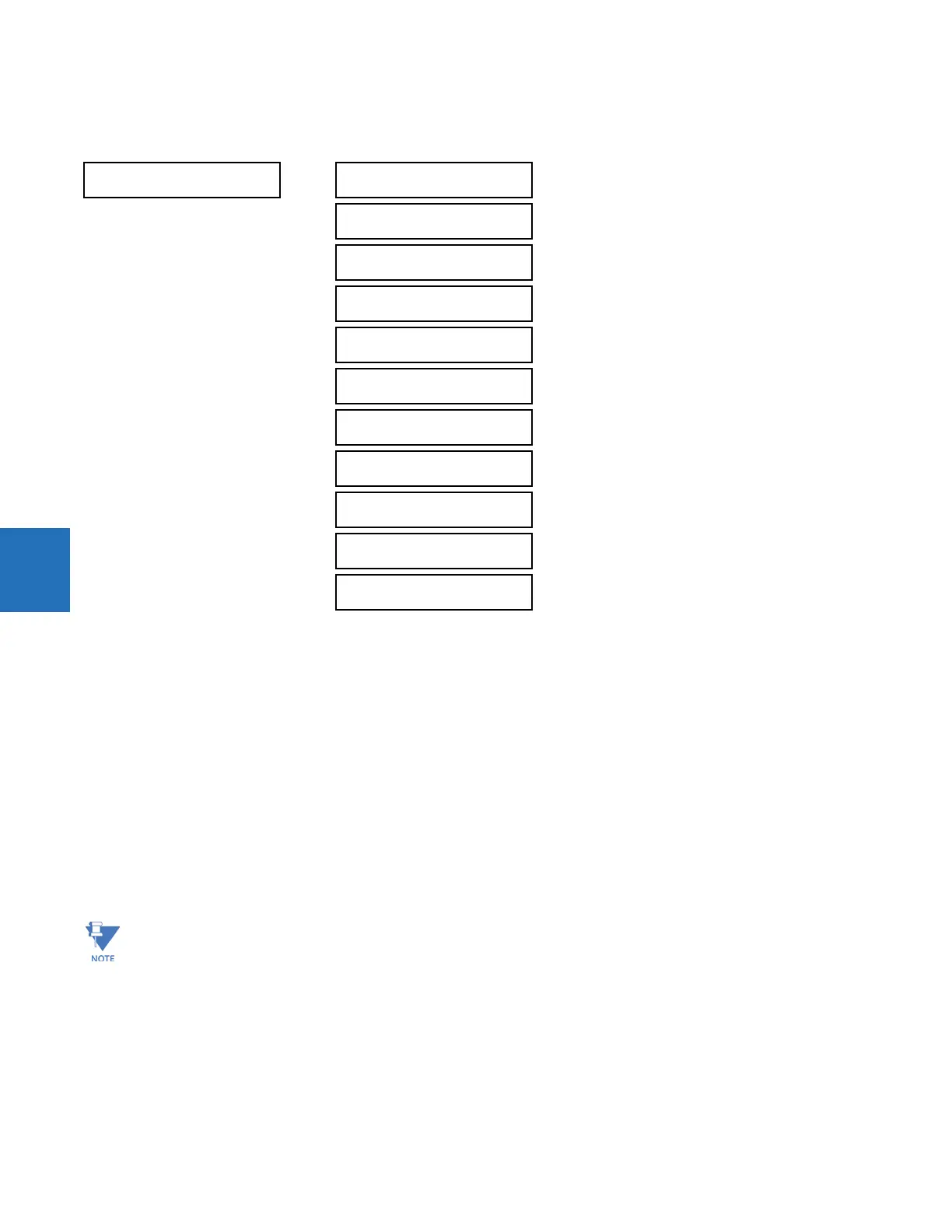5-318 L90 LINE CURRENT DIFFERENTIAL SYSTEM – INSTRUCTION MANUAL
GROUPED ELEMENTS CHAPTER 5: SETTINGS
5
5.7.15.3 87L trip
SETTINGS GROUPED ELEMENTS SETTING GROUP 1(6) SUPERVISING ELEMENTS 87L TRIP
The 87L trip element must be used to secure the generation of tripping outputs. It is especially recommended for use in all
single-pole tripping applications. It provides the capability of maintaining the trip signal while the fault current is still
flowing, to choose single-pole or three-pole tripping, to employ the received direct transfer trip (DTT) signals, and to assign
supervising trip elements like the disturbance detector. The logic is used to ensure that the relay
• Trips the faulted phase for a single line to ground fault, as detected by the line differential element
• Trips all three phases for any internal multiphase fault
• Trips all three phases for a second single line to ground fault during or following a single pole trip cycle
For maximum security, it is recommended that the disturbance detector (plus other elements if required) be assigned to
see a change in system status before a trip output is permitted. This ensures the relay does not issue a trip signal as a
result of incorrect settings, incorrect manipulations with a relay, or inter-relay communications problems (for example,
extremely noisy channels). The open pole detector provides forcing of three-pole tripping for sequential faults and close-
onto-fault if wanted. The open pole detector feature must be employed and adequately programmed for proper operation
of this feature. The 87L TRIP 1P OP and 87L TRIP 3P OP operands are provided to initiate single-pole or three-pole
autoreclosing.
87L TRIP FUNCTION — This setting is used to enable or disable the element.
87L TRIP SOURCE — Assigns a source for the seal-in function.
87L TRIP MODE — Selects either three-pole or single-pole mode of operation.
87L TRIP SUPV — Assigns a trip supervising element. The 50DD SV FlexLogic operand is recommended (the element has to be
enabled); otherwise, elements like instantaneous overcurrent, distance, and so can be used.
87L TRIP
87L TRIP FUNCTION:
Disabled
Range: Disabled, Enabled
87L TRIP SOURCE:
SRC 1
Range: SRC 1, SRC 2, SRC 3, SRC 4
87LP TRIP MODE:
3-Pole
Range: 3-Pole, 1-Pole
87LG TRIP MODE:
3-Pole
Range: 3-Pole, 1-Pole
87LP TRIP SUPV:
Off
Range: FlexLogic operand
87LG TRIP SUPV:
Off
Range: FlexLogic operand
87L TRIP FORCE 3Φ:
Off
Range: FlexLogic operand
87L TRIP SEAL-IN:
Disabled
Range: Disabled, Enabled
87L TRIP SEAL-IN
PICKUP: 0.20 pu
Range: 0.20 to 0.80 pu in steps of 0.01
87L TRIP TARGET:
Self-reset
Range: Self-reset, Latched, Disabled
87L TRIP EVENTS:
Disabled
Range: Disabled, Enabled
If a direct transfer trip (DTT) is not required for the 87L trip scheme to operate, disable it at the remote relay via the
GROUPED ELEMENTS SETTING GROUP 1(6) LINE DIFFERENTIAL ELEMENT CURRENT DIFFERENTIAL settings
menu.

